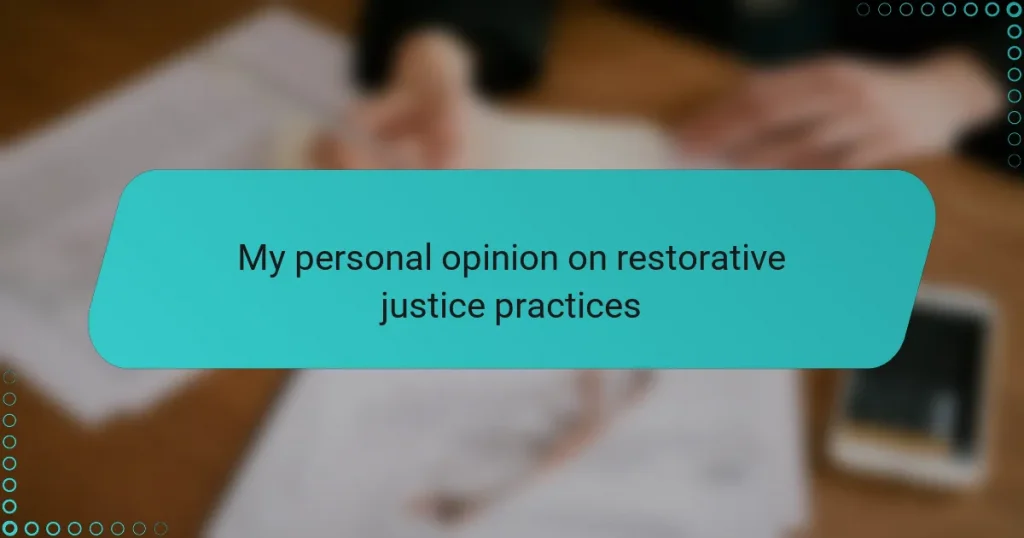Key takeaways
- Restorative justice focuses on repairing harm and fostering accountability, involving victims, offenders, and the community in the healing process.
- This approach empowers victims by giving them a voice and promotes a sense of control, leading to meaningful resolutions that traditional legal processes may overlook.
- While restorative justice has significant benefits, challenges include emotional reluctance to engage and the difficulty of integrating these practices within existing legal frameworks.
- Personal experiences in restorative justice highlight the transformative power of empathy and the need for courageous dialogue to foster healing and understanding.
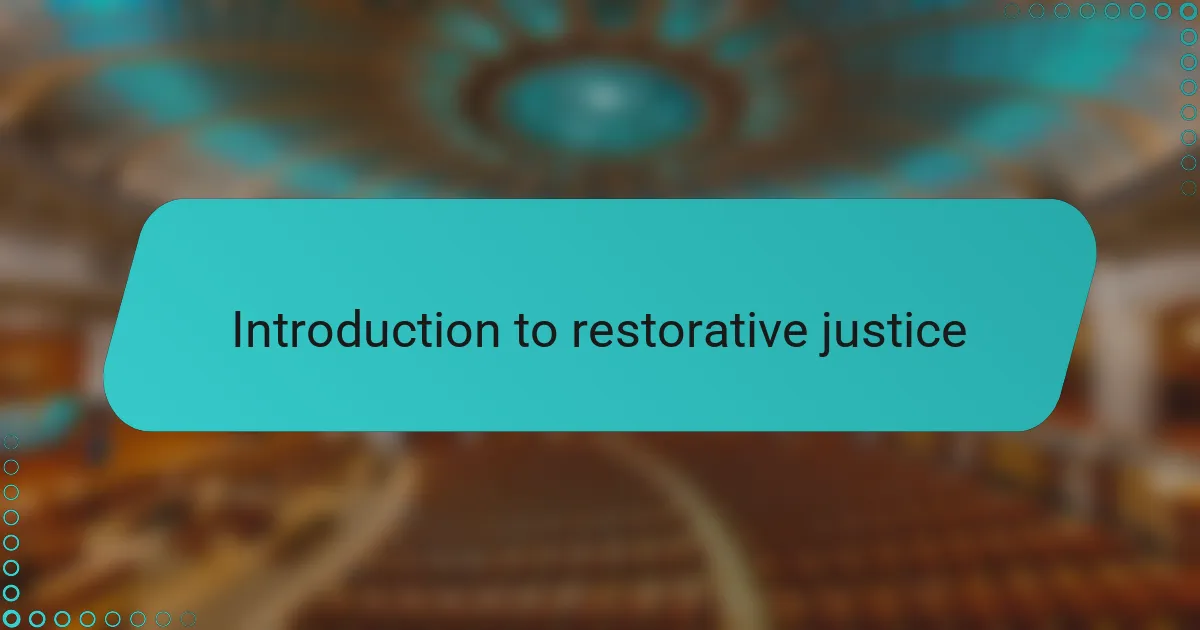
Introduction to restorative justice
Restorative justice is an approach that focuses on repairing the harm caused by wrongdoing rather than simply punishing the offender. I remember attending a community meeting where victims and offenders sat together to discuss the impact of a crime—it was powerful to see remorse and healing happen in real-time. Have you ever wondered what justice truly means beyond legal penalties?
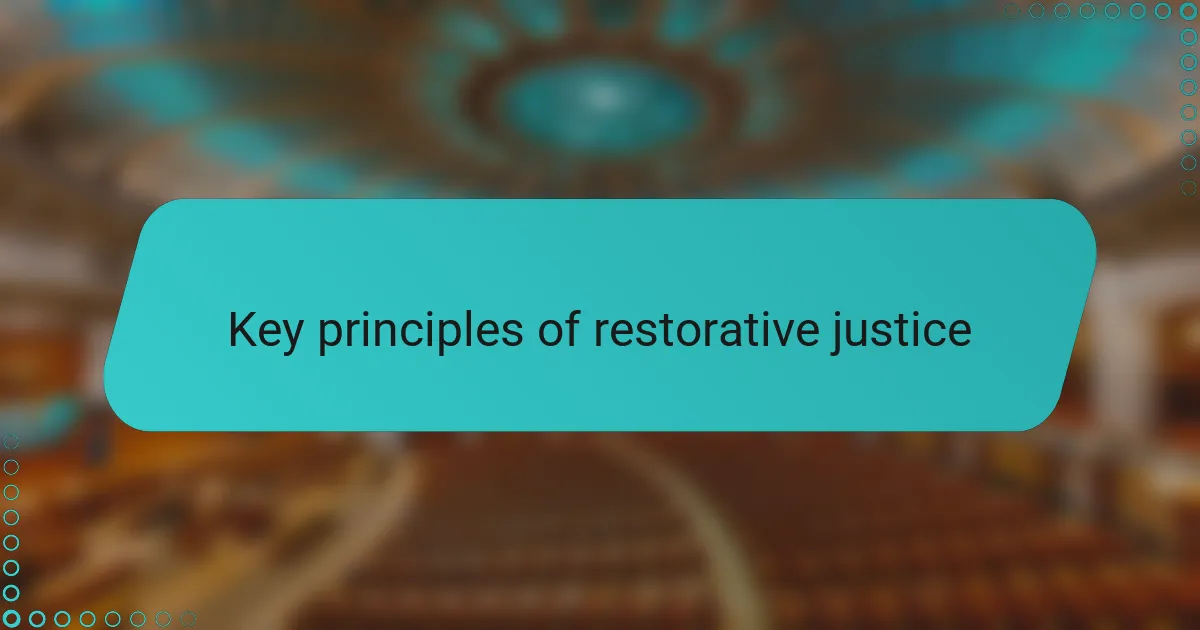
Key principles of restorative justice
One principle that resonates deeply with me is the emphasis on accountability. It’s not about assigning blame in a cold, detached way but encouraging offenders to truly understand the impact of their actions. I recall a case where an offender’s sincere apology transformed the victim’s pain into hope—showing me how accountability can be a pathway to healing.
Another essential element is the involvement of all parties affected by the harm—victims, offenders, and the community. This inclusion fosters a shared responsibility for repairing damage. Have you ever thought how powerful it must be for victims to have a voice in the justice process, rather than being sidelined?
Lastly, restorative justice rests on the belief in repairing relationships rather than merely enforcing punishment. To me, this is about restoring dignity and trust, which traditional legal systems often overlook. Isn’t the ultimate goal of justice not just to punish but to rebuild and move forward?
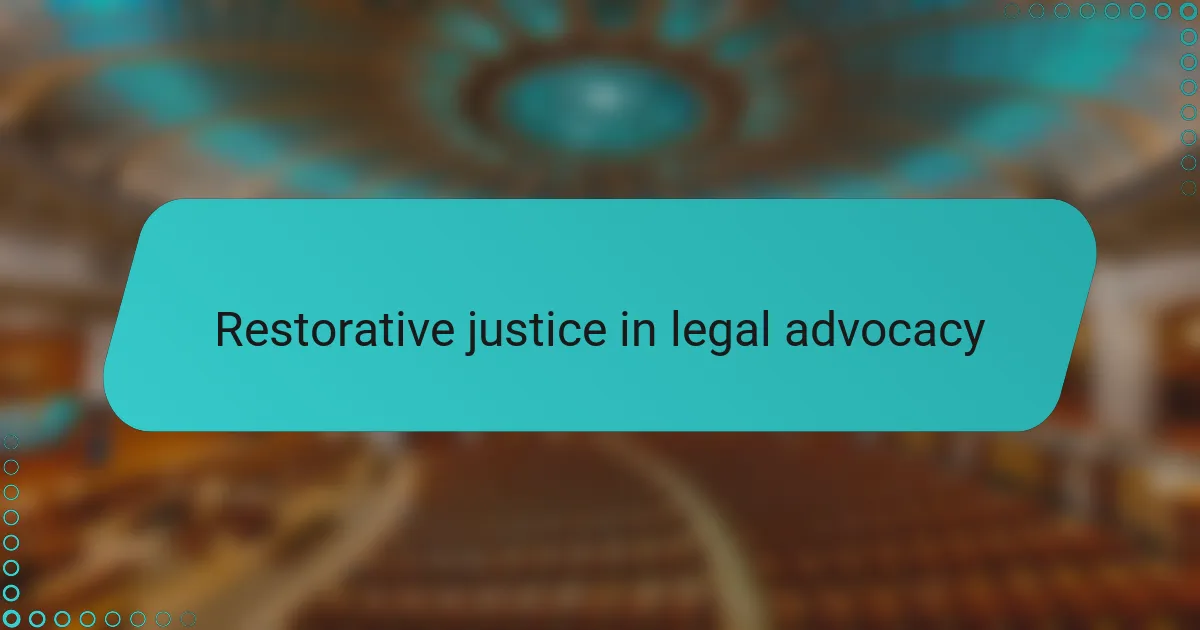
Restorative justice in legal advocacy
In legal advocacy, incorporating restorative justice practices feels like advocating for more than just legal outcomes—it’s about humanizing the entire process. I’ve observed how lawyers who embrace these principles can create spaces where clients feel heard and respected, which often leads to more meaningful resolutions. Isn’t it refreshing to think of legal advocacy as a bridge that can connect hurt parties rather than just a battlefield for disputes?
What strikes me most is how restorative justice challenges the conventional role of attorneys. Instead of solely defending or prosecuting, advocates sometimes step into facilitators of dialogue and healing. In one case I followed, the lawyer’s support in a restorative circle helped both sides move past anger and find common ground—a reminder that legal advocacy can extend beyond courtrooms into community restoration.
Have you noticed how traditional legal approaches sometimes overlook the emotional and relational aspects of conflict? Restorative justice in advocacy brings those elements front and center, helping to address the root causes of harm. From my experience, this approach doesn’t just resolve cases; it transforms lives in ways that strict legal procedures often cannot.
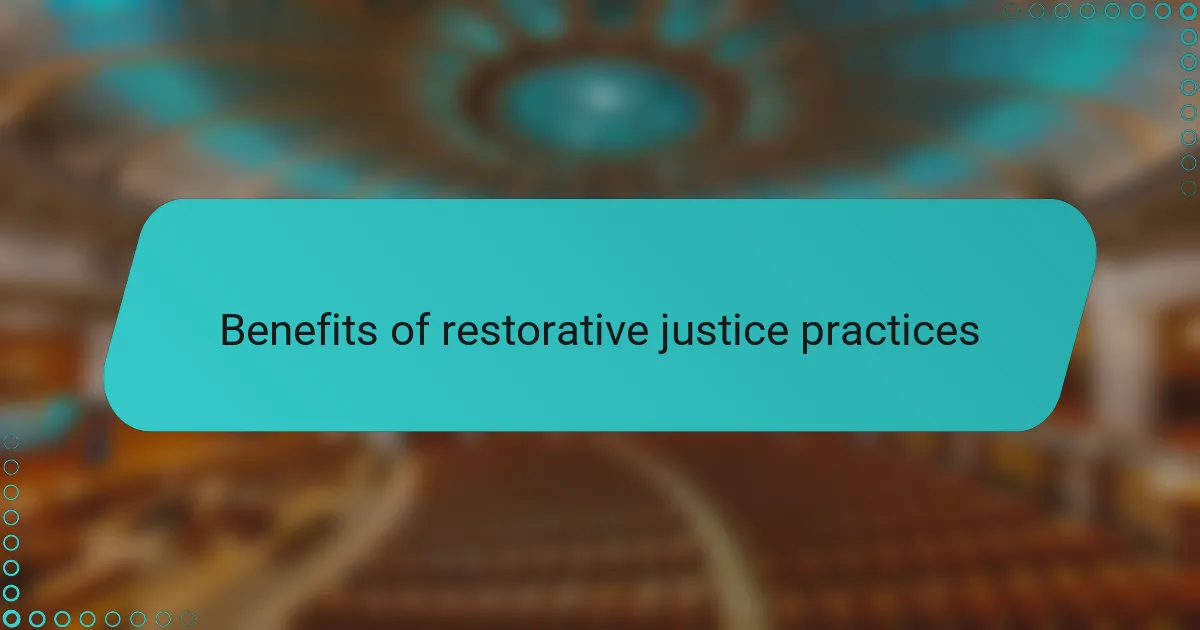
Benefits of restorative justice practices
One of the benefits that stands out to me about restorative justice practices is how they promote healing rather than just punishment. I recall witnessing a session where a young offender expressed genuine remorse, and the victim shared how that acknowledgment helped ease their pain. Isn’t it remarkable how understanding and empathy can begin to repair wounds that legal sentences alone rarely touch?
Another advantage is the empowerment victims gain by actively participating in the justice process. Giving them a voice often restores a sense of control and validation, which traditional courts can overlook. Have you ever thought about how transformative it is for someone to tell their story directly to the person who harmed them, rather than being a distant figure in a trial?
From my experience, restorative justice also benefits communities by rebuilding trust and fostering dialogue. This collective involvement often prevents future harm by addressing underlying issues collaboratively. It makes me wonder—could this approach create safer, more connected neighborhoods if embraced more widely?
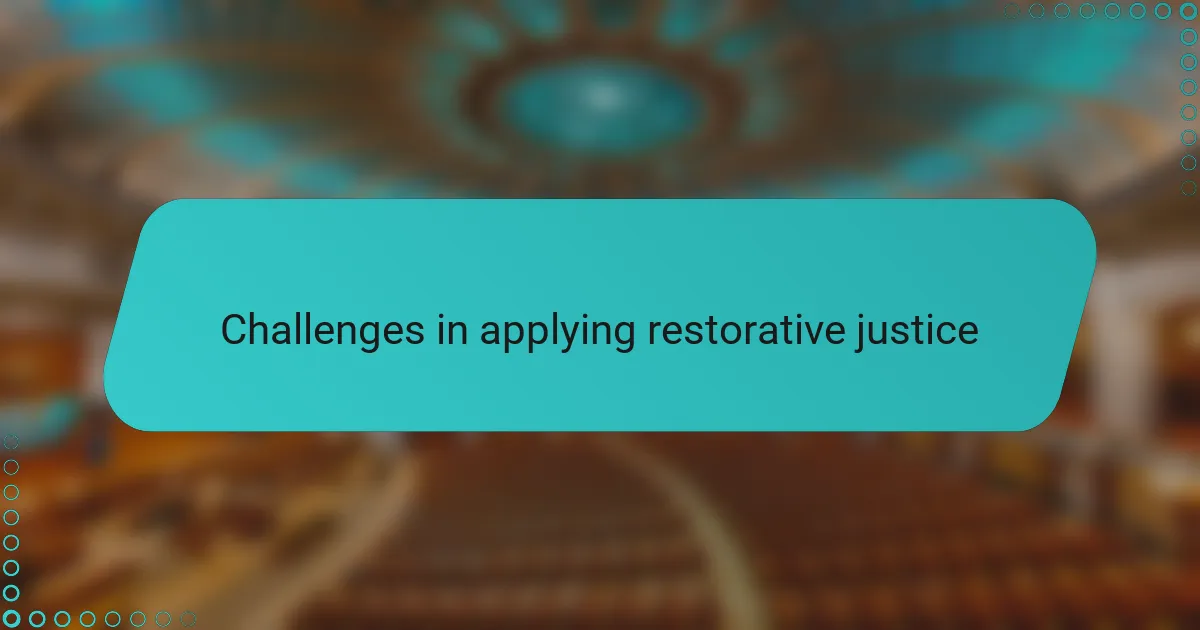
Challenges in applying restorative justice
Applying restorative justice is not without its hurdles. I’ve noticed that one significant challenge is the reluctance of some parties—whether victims or offenders—to fully engage. Sometimes, the emotional vulnerability required feels overwhelming, making it hard for people to open up and participate honestly.
Another difficulty lies in balancing restorative processes with existing legal frameworks. From what I’ve seen, integrating restorative justice into traditional courts can be complex, as the systems often prioritize punishment over healing. How can we reconcile these contrasting goals without compromising either’s integrity?
Lastly, I’ve observed that resource constraints pose practical challenges. Facilitating meaningful restorative dialogues demands skilled facilitators and time—luxuries that many legal advocates struggle to secure. Doesn’t this make us question how widely feasible restorative justice can be without dedicated support and funding?
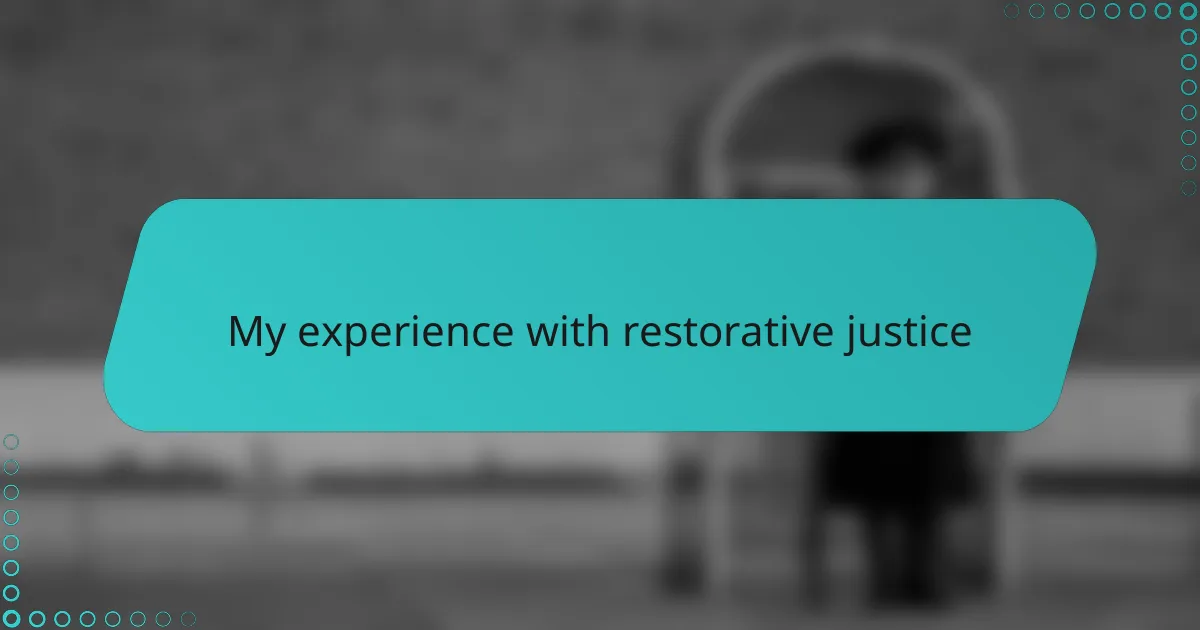
My experience with restorative justice
In my experience, participating in a restorative justice circle was unlike anything I’d witnessed in a traditional courtroom. Sitting face-to-face with both the person who caused harm and those affected, I saw firsthand how openness can slowly replace anger with understanding. It made me realize that justice isn’t just about rules—it’s about healing people.
There was one moment during a session that stuck with me: a young offender, nervous but sincere, apologized not just with words but with genuine emotion. Watching the victim’s guarded expression soften in response reminded me how powerful empathy can be when given space to grow. Have you ever seen remorse in a way that truly changes the course of a conflict?
Yet, I also noticed that restorative justice requires courage from everyone involved. It’s not easy to confront pain so directly, and I respect the bravery it takes. Reflecting on this, I often wonder—could more of our legal encounters move beyond confrontation to this kind of courageous dialogue? From where I stand, it’s a possibility worth striving for.
